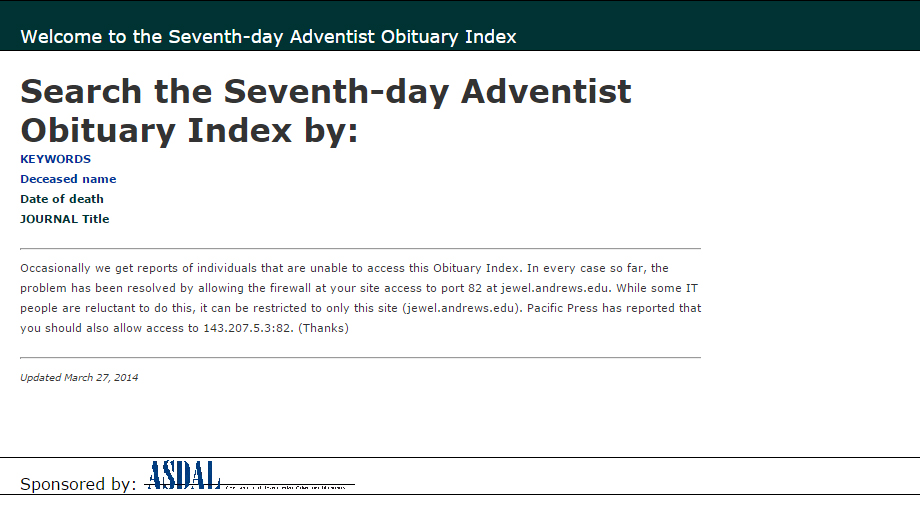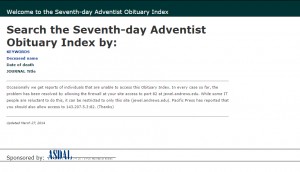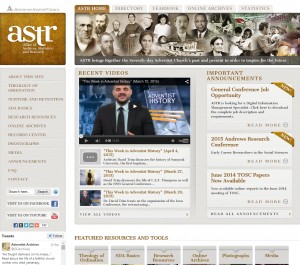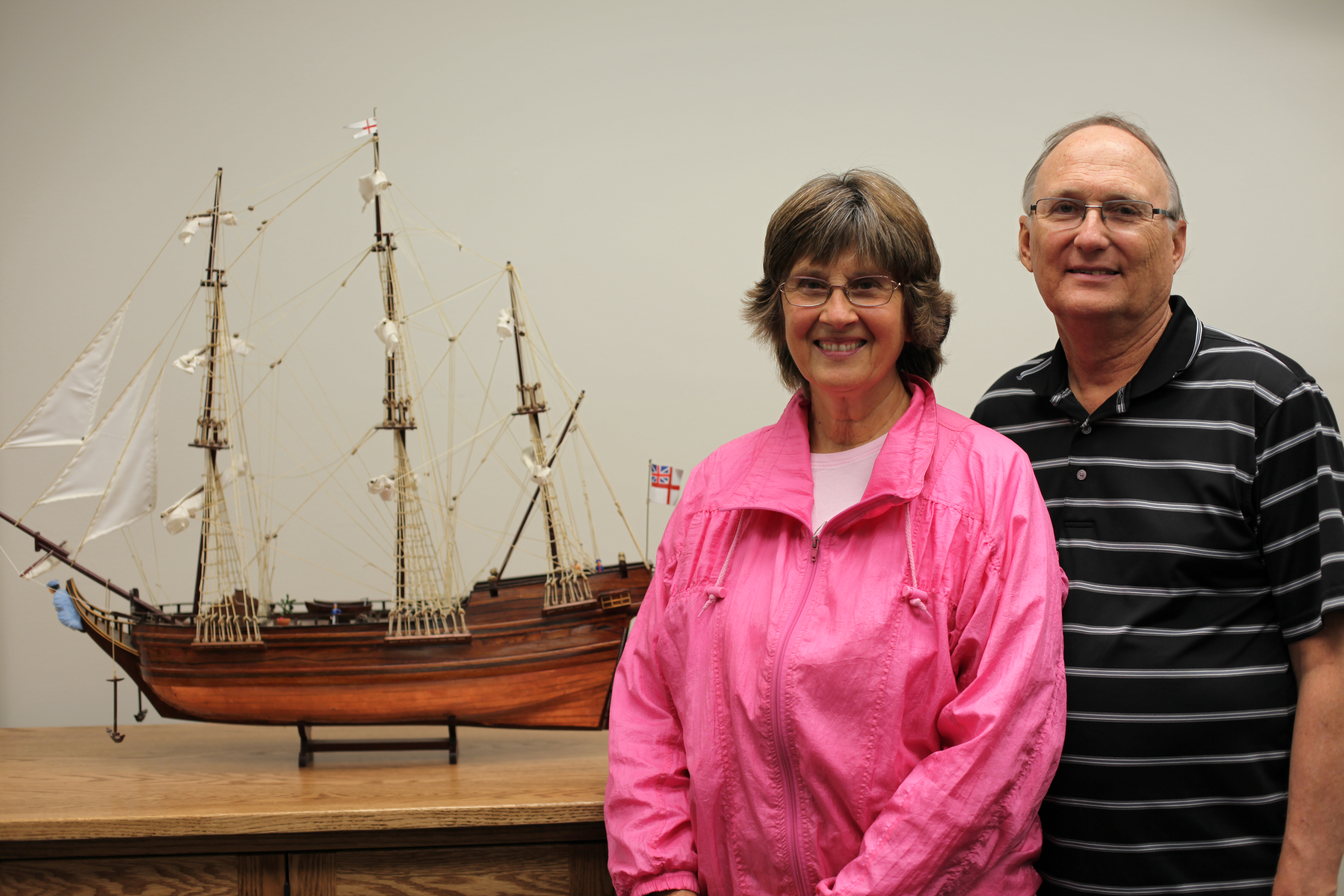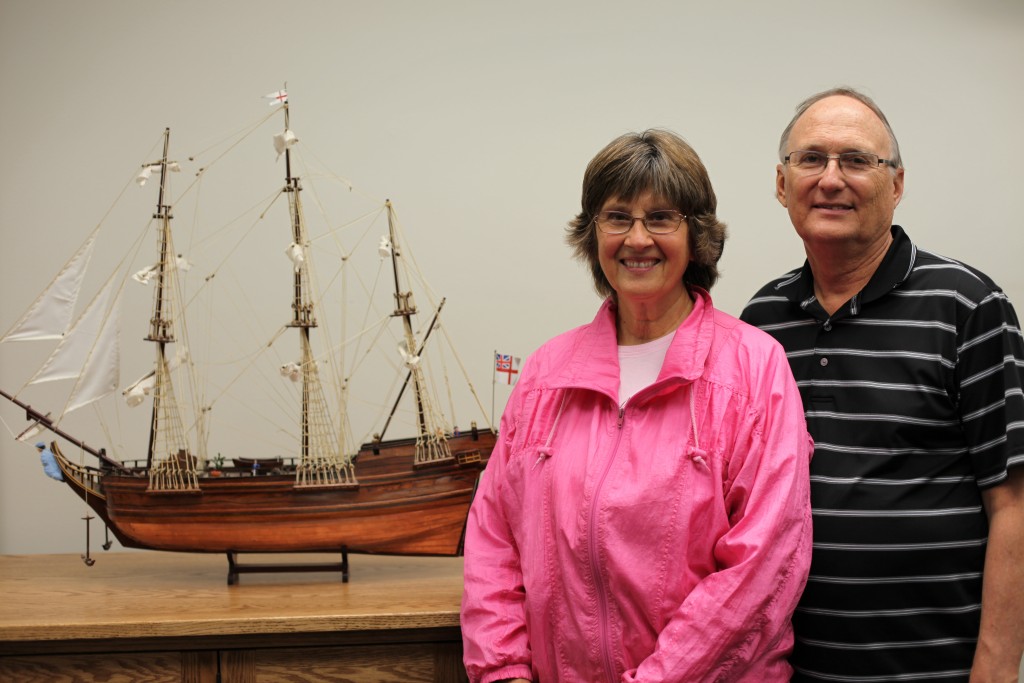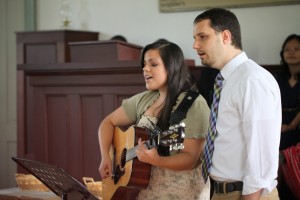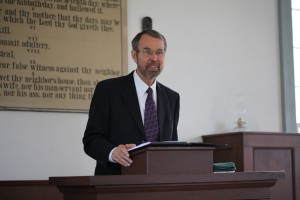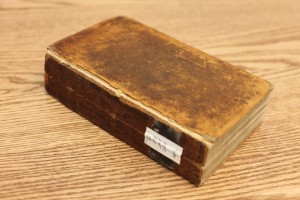 While doing some research in the Center’s vault Merlin D. Burt recently discovered that one of the Bibles in the John Nevins Andrews library had Czechowski’s signature in it.
While doing some research in the Center’s vault Merlin D. Burt recently discovered that one of the Bibles in the John Nevins Andrews library had Czechowski’s signature in it.
A native Polish speaker, Darius Jankiewicz, gave us a translation of the handwritten note as follows:
“As a keepsake (or memento) for Brother Julian Stawicki, on June 7, 1861.”
In other words this is a gift for Julian to remember Czechowski. Stawicki now owns the Bible. So it must have been a gift from Czechowski. A paraphrase would be: “A gift so that Brother Julian Stawicki remembers me.”
This was an interesting and not widely known fact, so it was decided to post some pictures of the Bible on Facebook. Denis Kaiser, a fan of the Center’s Facebook page and worker at the Center, found further information on Czechowski and Stawicki.
Stawicki was one of Czechowski’s converts to the Seventh-day Adventist faith in New York in 1860. See M. B. Czechowski, “The N.Y. Mission,” Review and Herald, Sept. 4, 1860, 124, 125; Julian Stawicki, “From Bro. Stawicki,” Review and Herald, Aug. 26, 1862, p. 103.
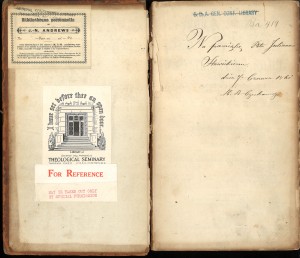 In the summer of 1861 Czechowski moved from New York City to Enosburg Falls, in the northern part of Vermont near the Canadian border. It may well be that Czechowski gave this Bible to Stawicki upon his departure. The date in the Bible (June 7, 1861) could actually help date Czechowski’s departure more precisely than just summer 1861.
In the summer of 1861 Czechowski moved from New York City to Enosburg Falls, in the northern part of Vermont near the Canadian border. It may well be that Czechowski gave this Bible to Stawicki upon his departure. The date in the Bible (June 7, 1861) could actually help date Czechowski’s departure more precisely than just summer 1861.
Of course, that doesn’t explain how it got from Stawicki to Andrews. It is, however, interesting that Stawicki’s name appears only in the Review and only in 1860 and 1862. Further research has to be done to discover more about Stawicki’s whereabouts after 1862. Maybe he defected from the faith, as there doesn’t seem to be an obituary for him in church periodicals.
Like all good research projects, this additional information by Denis has answered some questions but raised others. It is an interesting connection between these two pioneer missionaries to Europe. A former Catholic priest, Czechowski joined the Seventh-day Adventist church in 1857 and some time later asked the General Conference to sponsor him to be a missionary to Europe. The fledging denomination did not feel it was the right time, and said no. However Czechowski was not deterred and left in 1864 as a missionary to Europe. There he worked for several years sharing the Adventist message. He died in Vienna in 1876. Andrews left for Europe as a missionary in 1874. The story of how this Polish bible with Czechowski’s signature arrived in the personal library of J. N. Andrews is one yet to be discovered.

